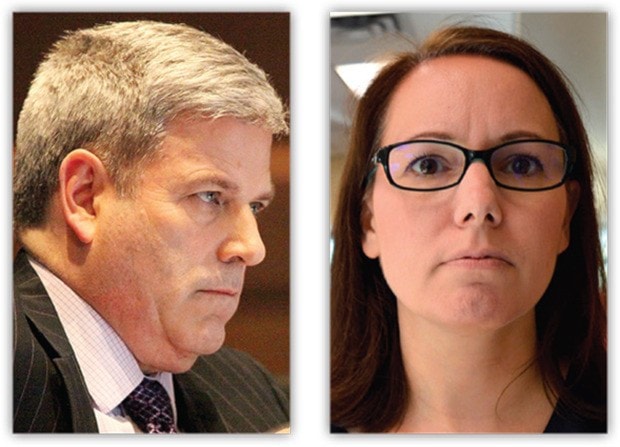SURREY — Public-private partnerships are just one idea Surrey wants the provincial government to explore in an effort to solve the city’s school overcrowding woes.
School overcapacity issues have come to a boiling point in Surrey in recent months, with school trustees and residents urging city hall to slow down growth until infrastructure can catch up.
Premier Christy Clark herself has acknowledged school funding is coming “after the fact” under current policies.
Mayor Linda Hepner committed to coming up with “made in Surrey” funding approaches, and she has delivered. The city is now sending those ideas to the province, proposing a variety of new funding opportunities for the growing city.
One idea Surrey wants the province to consider is delivering new schools using a P3 model. This process, used in other jurisdictions in Canada, would provide an opportunity for the private sector to build, finance and operate new schools within a specific timeframe. The province would then have the choice of purchasing it or not.
WHAT IS P3? Public – Private Partnerships (P3s) are a long-term performance-based approach to procuring public infrastructure where the private sector assumes a major share of the risks in terms of financing and construction and ensuring effective performance of the infrastructure, from design and planning, to long-term maintenance. In practical terms, this means that:
- Governments do not pay for the asset until it is built;
- A substantial portion of the cost is paid over the life of the asset and only if it is properly maintained and performs according to specifications; and
- The costs are known upfront and span the life-cycle of the asset, meaning that taxpayers are not on the financial hook for cost overruns, delays or any performance issues over the asset’s life.
(Source: P3canada.ca)
Surrey also hopes to see the province fund the design and permitting process of schools earlier. Right now, the dollars for that work are part of the capital submission approval.
This could have projects “shovel ready,’” which could save many months in the delivery process for new school space, explains Jean Lamontagne, Surrey’s general manager of planning, in a report to council.
The city also wants to see new “triggers” for applying for new infrastructure.
“This model could be used in high-growth areas where the process could be activated when a catchment is at 60 per cent enrolment and expected to reach 100 per cent or more by the time a new school space is ready for occupancy as it would align the delivery of the new school spaces with the arrival of the students, rather than after their arrival,” adds Lamontagne.
Another trigger, the city suggests, could be a maximum percentage of students that would be in portables.

The number of students in Surrey's portables (nearly 7,000), makes up the 24th largest school district among the province’s 60 districts.
The city also calls for a “special independent office” responsible for ranking capital allocations of different districts.
Lamontagne says the school district reports that 2,900 new school seats are needed immediately in addition to already announced projects. And, on an ongoing basis, Surrey wants the province to commit to 550 new seats per year (375 elementary and 175 secondary) and a new school site or expansion every other year.
Education advocate Cindy Dalglish said she’s happy to see “out of the box thinking.” But, she noted, the city’s numbers are too low. “If we have an influx of about 1,000 new students per year, then the number of seats needs to match that growth, 550 will not cut it,” she remarked.
The city says the district sees about 1,400 new students a year.
“Also, 2,900 new seats in addition to the 2,700 announced already in May still only adds up to 5,600 and right now we have about 7,000 students in portables.”
Dalglish said looking at public-private partnerships is a “slippery slope” and sees the potential for it to be “abused and relied on” in lieu of adequate provincial funding.
One thing left out the report, said Dalglish, is the fact that Surrey school district pays for portables out of its operation budget.
When the Now asked for comment, the Ministry of Education only replied with information about how it currently consults with the school district. The statement did not answer any specific questions about which, if any, of Surrey’s proposed solutions would be considered.
“On September 30, 2016 we received Surrey school district’s five-year capital plan which outlines their capital priorities,” the ministry said in the statement. “Since 2013/2014, more than 7,000 new student spaces have opened or been approved in Surrey.”
